Dehumidifiers are necessary pieces of equipment for relieving humid conditions in the home, as well as fostering productivity and good health. Maintaining the appliances is crucial for achieving maximal lifespan, and being able to pin-point the relevant factors is critical. This article will study the impact of usage, dehumidifier quality, and maintenance routine on its lifespan. Alongside these factors, we will discuss methods of recognizing dehumidifier unit failure as well as steps to extend its operation life. Following this article, readers should understand the range of achieving maximum functionality and reliability from the appliance.
What is the average lifespan of a dehumidifier?
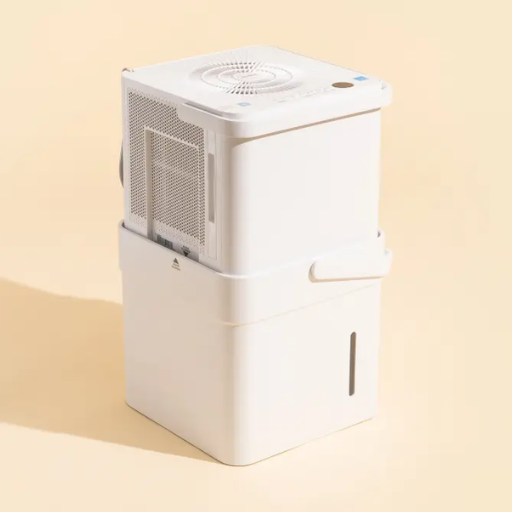
The average lifespan of a dehumidifier typically ranges from 5 to 10 years, depending on factors such as build quality, frequency of use, and maintenance. Higher-quality units with proper care and regular cleaning tend to last longer, while excessive use or neglect can shorten their operational life.
Typical lifespan range for residential dehumidifiers
Residential dehumidifiers typically last between 5 to 10 years. Models on the higher end of this range are often built with durable components and maintained regularly, which includes cleaning the filter, emptying the tank, and ensuring proper airflow. Lower-cost or heavily-used units may have a shorter life span, especially if operating continuously in high-humidity environments. To maximize longevity, it’s essential to follow the manufacturer’s guidelines and schedule periodic maintenance checks.
Factors affecting dehumidifier longevity
Quality of Build and Components
The overall quality of the dehumidifier plays a significant role in its life span. High-end models are generally constructed with superior materials, including longer-lasting compressors and fans, making them more resilient to wear and tear. Cheaper units often use less durable parts, which can lead to more frequent breakdowns.
Frequency and Duration of Use
Continuous or excessive use, especially in high-humidity environments, can significantly shorten a dehumidifier’s life span. Units that are run at maximum settings for prolonged periods are more prone to mechanical failure compared to those used intermittently or under less demanding conditions.
Maintenance and Care
Regular maintenance is crucial for extending longevity. Proper care includes cleaning or replacing filters, emptying the water reservoir promptly, clearing out any dust from air intakes, and ensuring the unit is free from clogs or blockages. Following the manufacturer’s maintenance guidelines is key to preventing unnecessary strain on the device.
Environmental Factors
Operating conditions such as humidity levels, temperature, and the size of the space being dehumidified also impact a unit’s longevity. Extremely moist environments can cause a dehumidifier to work harder, while fluctuating temperatures or improper placement could lead to reduced efficiency and potential damage over time.
A combination of choosing a quality unit and adhering to maintenance routines will ensure a longer operational life, even in challenging environments.
Differences between refrigerant and desiccant dehumidifiers
Refrigerant and desiccant dehumidifiers differ in their mechanisms and best-use scenarios. Refrigerant dehumidifiers work by condensing moisture from the air onto a cold coil, making them more effective in warm and humid conditions. They are generally energy-efficient for high-moisture environments but can struggle in colder temperatures where condensation becomes less efficient.
Desiccant dehumidifiers, on the other hand, use a moisture-absorbing material, such as silica gel, to extract humidity from the air. These are more suitable for colder climates and environments requiring lower humidity levels, as they are not reliant on temperature for operation. However, they tend to use more energy compared to refrigerant models.
When deciding between the two, consider the temperature and humidity of the space, energy efficiency, and noise levels. Refrigerant dehumidifiers are ideal for warmer and wetter conditions, while desiccant models excel in cold or specialized settings where precise humidity control is needed.
How can I make my dehumidifier last longer?
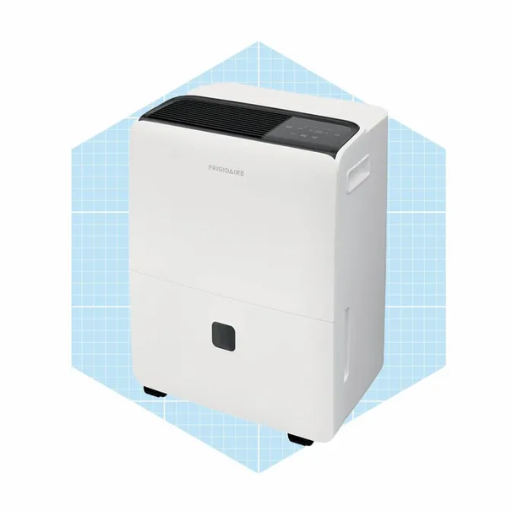
To make your dehumidifier last longer, regular maintenance is key. Clean the air filter frequently to prevent clogging and ensure optimal airflow. Empty the water collection tank promptly to avoid moisture buildup that could lead to mold. Place the dehumidifier in a well-ventilated area, away from walls or obstacles, to allow proper airflow. Periodically check the coils for dust or frost and clean them if needed. Follow the manufacturer’s guidelines for servicing and avoid overloading the unit by using it within its specified capacity. These steps will help prolong the lifespan and efficiency of your dehumidifier.
Regular maintenance tips to extend lifespan
To keep your humidifier in its best condition, consider these maintenance tips:
Clean the Filter Regularly: A majority of dehumidifiers has a washable air filter which captures dust and other allergens. To enhance efficiency and airflow, clean the filter regularly, preferably every week or two. Filters that are clogged will work against the unit, worsening its performance and shortening its lifespan.
Inspect the Coils: Coils that are dirty or frosted can impact the performance of ur humidifier negatively. Periodically, clean them using a soft cloth and check for frost buildup, especially in colder areas. If the frosted state of the coils poses a risk, turn off the device and allow defrosting.
Empty and Wash the Water Tank: To hinder the growth of bacteria and mold, remember to frequently empty the water collection tank. The best practice is to rinse it with soap and water and allow drying before re-inserting it. You may opt for a continuous drainage system, which bypasses this consideration entirely.
Check for Blockages: It’s essential that the ventilation intakes and exhausts are void of any accumulated dirt, as this will assist improve airflow and reduce pressure placed on the motor.
Store Properly in Off-Season: If not in use, it’s advisable that the unit is cleaned thoroughly before being stored in a dry cool location, shield it from moisture or dust. Such a practice will preserve the device extending its durability.
Test and Calibrate Regularly: Check the dehumidifier at regular intervals to ensure it is functioning at the correct humidity levels and working properly. Pay attention to any strange sounds, since they may point to mechanical problems.
Following these practices places the dehumidifier in an optimal operational zone while avoiding undue damage and repairs, ensuring it operates reliably for years.
Proper usage and placement for optimal performance
To maximize both the operation and placement of your dehumidifier, consider these recommendations.
Pick the Right Place: Dehumidifiers can help with humidity problems in basements and bathrooms, so be sure to place them in those particular rooms. Also, place the dehumidifier on an even surface that is not cluttered for proper airflow clearance of at least 12-18 inches from furniture or walls.
Placement Affects Performance: Improper placement such as near windows or underneath direct sunlight can disturb a dehumidifier’s function and efficiency. Placing the dehumidifier in enclosed rooms with closed doors and windows solves this issue, enabling the dehumidifier to work without interference from external air.
Focus on Specific Humidity Setting: Best practices suggest keeping household relative humidity between 30-50%. This should be placed with the dehumidifier’s settings or self-measured by a hygrometer. Regardless, the setting should be aimed towards comfort and health, so adjustment is key.
Do Not Interfere with Airflow: If the focus is on specific areas, ensure that the position of vents or fan sources does not interfere with the airflow direction targeted toward the dehumidifier. Doing so makes it easier for the device to capture moisture.
As demonstrated, following the above tips assists in achieving a stress-free operation and optimized performance of a dehumidifier for better comfort.
When to empty and clean your dehumidifier
Your dehumidifier should be emptied and cleaned regularly to ensure optimal performance and longevity. Typically, it’s best to empty the water reservoir daily or whenever it reaches its capacity, depending on the humidity levels in your space. Many units have an indicator light or automatic shut-off feature to alert you when the tank is full. Cleaning should be done at least once every two weeks or as recommended by the manufacturer. This includes washing the water tank with warm, soapy water to prevent mold and bacteria buildup and wiping down the exterior. Additionally, check and clean the air filter regularly—most filters require cleaning every 1-2 months. Staying consistent with these maintenance practices will keep your dehumidifier running smoothly and maintain a healthier indoor environment.
What are the signs that my dehumidifier needs replacement?
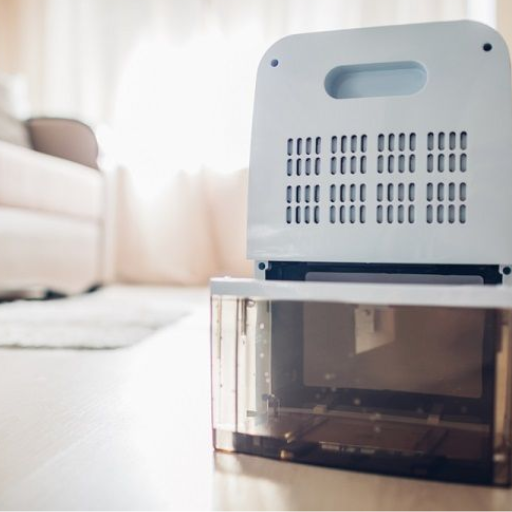
There are a few signs that your dehumidifier might be on its last legs. If it struggles to remove moisture from the air even with proper servicing, that may indicate it isn’t functioning properly. Other signs, such as strange sounds, unresolved persistent problems, or error messages that cannot be fixed, could also suggest there is a greater underlying problem. In addition, if it is already 5-10 years old, modern features and enhancements in technology may justify the need for purchase of a new unit. Most importantly, high energy expenses linked to an inefficient or failing unit means it is time for the dehumidifier to be replaced.
Common indicators of a failing dehumidifier
Recognizing a failing dehumidifier is crucial to maintaining a comfortable and energy-efficient home environment. One common sign is reduced moisture removal, where the unit struggles to dehumidify the air effectively, even when operating for extended periods. Another key indicator is unusual noises, such as rattling, buzzing, or clicking sounds, which may suggest issues with internal components like the fan or compressor. Additionally, frequent error codes or the inability to resolve malfunctions, even after cleaning the filter or performing basic maintenance, point to underlying problems. Water leakage or inability to drain properly can also signal damage to the tank or hose connections. Lastly, observing a spike in energy bills despite regular use could indicate the dehumidifier is working inefficiently, often a result of wear and tear or outdated technology.
Impact on indoor air quality and humidity levels
Properly functioning dehumidifiers play a vital role in maintaining indoor air quality and optimal humidity levels. By removing excess moisture from the air, they help prevent the growth of mold, mildew, and dust mites, which are significant contributors to allergies and respiratory issues. Balanced humidity levels between 30% and 50% not only enhance comfort but also protect furniture, electronics, and structural elements from moisture-related damage. Conversely, a malfunctioning dehumidifier can lead to elevated indoor humidity, creating a breeding ground for harmful microorganisms and aggravating health problems. Ensuring timely maintenance and monitoring efficiency is crucial for maintaining a healthy, comfortable, and energy-efficient living environment.
When to repair vs. when to replace
Deciding whether to repair or replace a dehumidifier depends on factors like age, cost of repairs, and overall efficiency. If the dehumidifier is less than five years old and the repair cost is under 50% of the price of a new unit, repairing is often the smarter choice. However, if the unit is older, frequently breaking down, or losing energy efficiency, replacement may be more cost-effective in the long term. Modern dehumidifiers come with improved features like higher energy efficiency and quieter operation, making them an attractive option. Regular maintenance and prompt attention to issues can extend a unit’s lifespan, potentially delaying the need for replacement. Always consider the manufacturer warranty, as it might cover some repairs, reducing out-of-pocket costs.
Do industrial and commercial dehumidifiers last longer than residential ones?
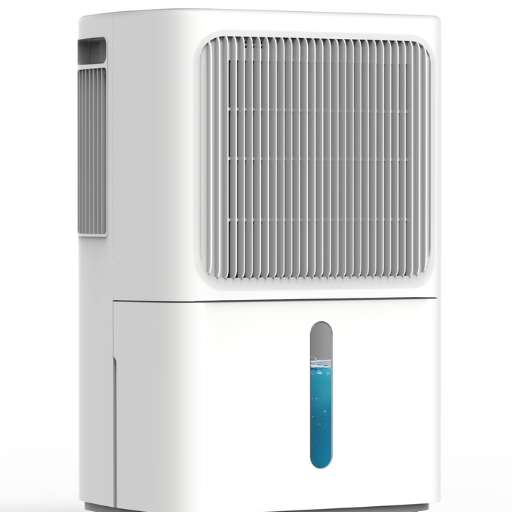
Yes, industrial and commercial dehumidifiers generally last longer than residential ones. They are designed to handle heavier workloads and operate in more demanding environments, making them more durable and robust. However, their lifespan also depends on factors like usage intensity, proper maintenance, and environmental conditions. With regular upkeep, industrial models can outlast their residential counterparts significantly.
Comparing lifespans of different dehumidifier types
When comparing the lifespans of different dehumidifier types, it’s essential to consider their intended application, build quality, and maintenance requirements. Residential dehumidifiers typically last between 3 to 5 years, depending on usage and care. These are designed for moderate household use and may wear out more quickly if pushed beyond their capacity.
On the other hand, commercial and industrial dehumidifiers have a much longer lifespan, often ranging from 8 to 15 years or more. They are constructed for continuous use in demanding settings like warehouses or large offices, with durable components that can withstand tough environmental conditions. Regular maintenance and cleaning of filters, coils, and drainage systems significantly contribute to extending the life of any dehumidifier.
Ultimately, the lifespan of a dehumidifier, whether residential or industrial, hinges largely on the frequency of use, environmental factors, and how well it is maintained. Investing in a higher-quality unit and following proper care routines will ensure a longer and more efficient performance across all types.
Factors contributing to industrial dehumidifier longevity
Proper Maintenance and Cleaning
Routine maintenance is one of the most critical factors determining the lifespan of industrial dehumidifiers. Regular cleaning of coils, filters, and drainage systems prevents dust and debris buildup, which can hinder performance and lead to wear and tear. Additionally, inspecting moving parts like fans and compressors ensures smooth operation and early detection of potential issues.
Environmental Operating Conditions
Operating a dehumidifier within its recommended environmental conditions significantly improves its longevity. Maintaining proper temperature and humidity levels in the surrounding area ensures the dehumidifier isn’t overworked or stressed under extreme conditions, which could lead to premature failure.
Usage Patterns
The frequency and intensity of use play a substantial role in the durability of an industrial dehumidifier. Units used consistently in demanding environments, such as manufacturing facilities, may require more frequent maintenance compared to those used in moderate climates. Monitoring runtime and avoiding overuse ensures reliable long-term performance.
Quality and Technology of the Unit
Investing in high-quality dehumidifiers with advanced technologies can lead to longer service life. Units equipped with energy-efficient systems, durable materials, and smart monitoring features are better built to withstand rigorous daily use. Choosing a trusted brand with a strong track record also makes a significant difference in longevity.
By balancing proper care, optimal environmental settings, and thoughtful usage, businesses can maximize the lifespan and effectiveness of their industrial dehumidifiers.
How often should I replace my dehumidifier’s filter and coils?

In most cases, filters on a dehumidifier are either cleaned or replaced every one to three months depending on the make and model as well as how much the unit is used. Regular maintenance helps maintain indoor air quality as well as overall performance of the unit. In contrast, coils should be checked and cleaned at least biannually to minimize the accumulation of dust and debris that could lower efficiency or cause breakdowns. For the best results, always follow the instructions stated on the manual of the unit.
Recommended maintenance schedule for filters
Depending on the model, dehumidifier filters should be cleaned or replaced every one to three months. The following factors will affect filter maintenance frequency:
Usage Level – If the dehumidifier is used on a daily basis, or in a humid environment, consider cleaning the filter as often as every month to retain optimal performance.
Manufacturer’s Guidelines – Check the user manual pertinent to the product, as some filters may last far longer, or require more attention than expected.
Environmental Factors – Filter cleaning or replacement may be needed more often for homes where pets, dust, or low air quality are present.
In addition to prolonging the lifespan of your dehumidifier, proper maintenance ensures air quality standards are met, and energy-efficient usage is claimed.
Signs that coils need cleaning or replacement
Reduced Efficiency – If your dehumidifier is taking longer than usual to remove moisture or is not maintaining the desired humidity level, dirty or clogged coils might be the issue.
Frost or Ice Build-Up – Excessive frost or ice forming on the coils indicates poor airflow, which is often caused by dirt or debris accumulation.
Unusual Noises – Strange or loud noises from the unit could suggest that the coils are dirty or damaged, impacting the system’s performance.
Decreased Airflow – Limited airflow or an unusual damp odor emanating from the device can result from unclean coils impairing the proper function.
Visible Dirt or Corrosion – Inspect the coils for visible signs of dirt, dust, or corrosion, which can signal the need for a thorough cleaning or replacement.
Regular maintenance of the coils helps preserve the dehumidifier’s efficiency, prevents system strain, and ensures optimal performance over time.
What role does the quality of a dehumidifier play in its lifespan?
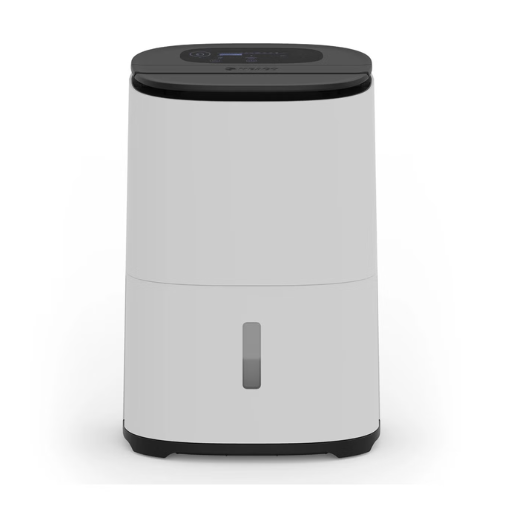
The quality of a dehumidifier significantly impacts its lifespan and overall performance. A high-quality dehumidifier is built with durable materials and reliable components, which can withstand prolonged use and resist wear and tear more effectively. These devices often come with better design features, such as efficient compressors, advanced filtration systems, and robust coils, reducing the likelihood of malfunctions and the need for frequent repairs. On the other hand, lower-quality models may have shorter lifespans due to subpar construction, leading to inefficiency and premature failure. Investing in a well-made dehumidifier ensures better long-term value, consistent performance, and reduced maintenance costs.
Differences between budget and high-end dehumidifiers
The primary differences between budget and high-end dehumidifiers lie in their build quality, performance, features, and long-term value. Budget dehumidifiers are typically constructed with lower-cost materials, which may reduce durability and result in a shorter lifespan. These models often perform adequately for smaller spaces but might struggle with high humidity levels or larger rooms. They also tend to lack advanced features such as smart controls, energy-saving modes, or quiet operation.
High-end dehumidifiers, however, are designed with premium components and offer superior performance. They are more efficient at removing moisture, even in demanding conditions, and typically cover larger areas. These models often include advanced capabilities such as Wi-Fi connectivity, more precise humidity controls, automatic shutdown, and energy certification, ensuring long-term cost savings. While the initial investment is higher, high-end models generally require less maintenance, provide consistent performance, and offer a better overall user experience, making them a more reliable choice for long-term dehumidification needs.
Key features that contribute to longer-lasting appliances
Durable Materials and Build Quality
High-quality appliances are typically constructed using robust materials such as stainless steel or corrosion-resistant components. These materials are less prone to wear and tear, ensuring the appliance can withstand daily use over extended periods.
Energy Efficiency
Energy-efficient models not only reduce electricity consumption but also place less strain on their internal components, enhancing their lifespan. Look for appliances with Energy Star certifications or equivalent energy standards.
Advanced Technology and Smart Features
Appliances with advanced technology, such as self-cleaning systems, diagnostic tools, and smart connectivity, often identify and resolve potential issues early. These features minimize long-term damage, making the appliance more reliable over time.
Regular Maintenance and Replaceable Parts
Models designed for easy maintenance or with readily available replacement parts can extend the life of the appliance significantly. Access to filters, gaskets, or other components allows for quick repairs and upkeep.
Warranty and Manufacturer Service Support
A strong warranty and good manufacturer service indicate confidence in the product’s durability. Opting for brands with responsive customer support ensures peace of mind and the longevity of the appliance.
By combining durable construction, energy-saving features, routine maintenance, and cutting-edge technology, appliances are more likely to provide better performance and last for years to come.
How does climate and usage affect a dehumidifier’s lifespan?
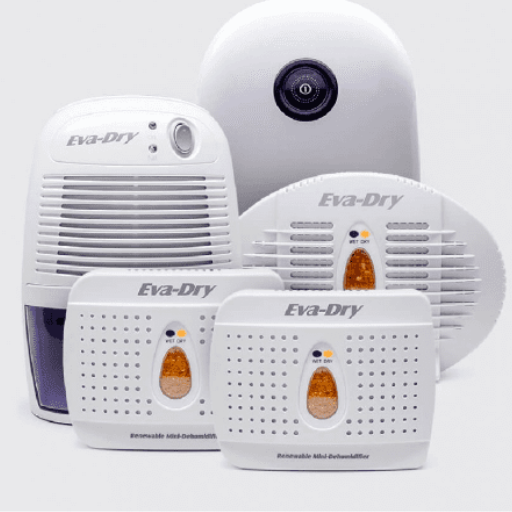
Climate and usage play critical roles in determining a dehumidifier’s lifespan. High-humidity climates often require dehumidifiers to operate more frequently, leading to increased wear and tear on components like the compressor and fan. Similarly, heavy and continuous usage can strain the device, reducing its efficiency over time. To mitigate these effects, it is essential to choose a dehumidifier designed for the specific climate and usage needs, regularly clean filters, and follow manufacturer guidelines for operation and maintenance. Proper care can help extend the device’s longevity, even in challenging conditions.
Impact of continuous vs. intermittent use
The way a dehumidifier is used significantly influences its longevity and efficiency. Continuous use can be beneficial in persistently high-humidity environments as it prevents excessive moisture buildup, which could lead to mold and other issues. However, this consistent operation can accelerate component wear and increase energy consumption over time. Intermittent use, on the other hand, may be more suitable for areas with moderate humidity levels or for seasonal usage. This approach reduces strain on the unit and lowers energy costs, but it might not sufficiently manage moisture in consistently damp conditions. For optimal performance and longevity, striking a balance is essential—using advanced features like programmable timers or built-in humidistats can help regulate operation based on actual humidity levels, ensuring the dehumidifier only runs when needed. Regular maintenance is also key to sustaining reliable performance regardless of the chosen usage pattern.
Effects of extreme humidity levels on appliance longevity
Extreme humidity levels, whether excessively high or low, can significantly impact the lifespan and functionality of appliances. High humidity fosters the buildup of moisture inside appliances, encouraging rust, corrosion, and the growth of mold on internal components. This is particularly damaging to electronic devices and appliances with metal parts, as prolonged exposure to moisture can lead to electrical malfunctions and structural degradation. Conversely, very low humidity levels can cause plastic and rubber seals, commonly found in appliances, to dry out, crack, or become brittle, compromising their integrity and leading to inefficiencies.
To mitigate these effects, it’s essential to maintain indoor humidity levels between 30% and 50%, as recommended by experts. Using tools like dehumidifiers or humidifiers can help achieve balanced conditions, while regular cleaning and inspections of appliances ensure any moisture-related issues are addressed quickly. Additionally, placing appliances in well-ventilated, climate-controlled environments can further protect them from the adverse effects of extreme humidity.
References
Frequently Asked Questions (FAQ)
Q: How long do dehumidifiers typically last?
A: Dehumidifiers typically last between 5 to 10 years, depending on the brand, model, and how well they are maintained. Proper care can help prolong their lifespan.
Q: What factors affect the lifespan of a dehumidifier?
A: Factors that affect the lifespan of a dehumidifier include the quality of the unit, frequency of use, maintenance practices such as cleaning and regularly changing filters, and the environment in which it operates.
Q: How can I prolong the lifespan of my dehumidifier?
A: To prolong the lifespan of your dehumidifier, make sure to regularly change the filters, clean the coils, and keep the unit away from dust and debris. Operating efficiently and maintaining the recommended moisture levels can also help.
Q: Is there a difference in lifespan between residential and commercial dehumidifiers?
A: Yes, the lifespan of a commercial dehumidifier is generally longer than residential models due to their robust construction and higher-quality components designed for more demanding environments.
Q: What maintenance is required for a dehumidifier to last longer?
A: Regular maintenance such as cleaning the water tank, checking electrical components, and ensuring the cooling coils are free from dust can help a dehumidifier last even longer.
Q: Are there specific brands known for a longer dehumidifier lifespan?
A: Brands known for quality dehumidifiers that tend to have a longer lifespan include Frigidaire, Honeywell, and LG, among others. Always research and read reviews when you’re interested in purchasing a new dehumidifier.
Q: Do different types of dehumidifiers have different lifespans?
A: Yes, refrigerant dehumidifiers use cooling coils and are generally more durable compared to other models. Heat pump models use different mechanisms but are also built to handle high humidity environments efficiently.
Q: How does usage impact how long dehumidifiers last?
A: Frequent usage, especially in environments with high moisture levels, can wear out a dehumidifier faster. However, if used properly and maintained well, it can continue operating efficiently without significant issues.
Q: When should I consider buying a new dehumidifier?
A: Consider buying a new dehumidifier if your current one is no longer operating efficiently, is unable to control humidity levels effectively, or if repairs become frequent and costly.



